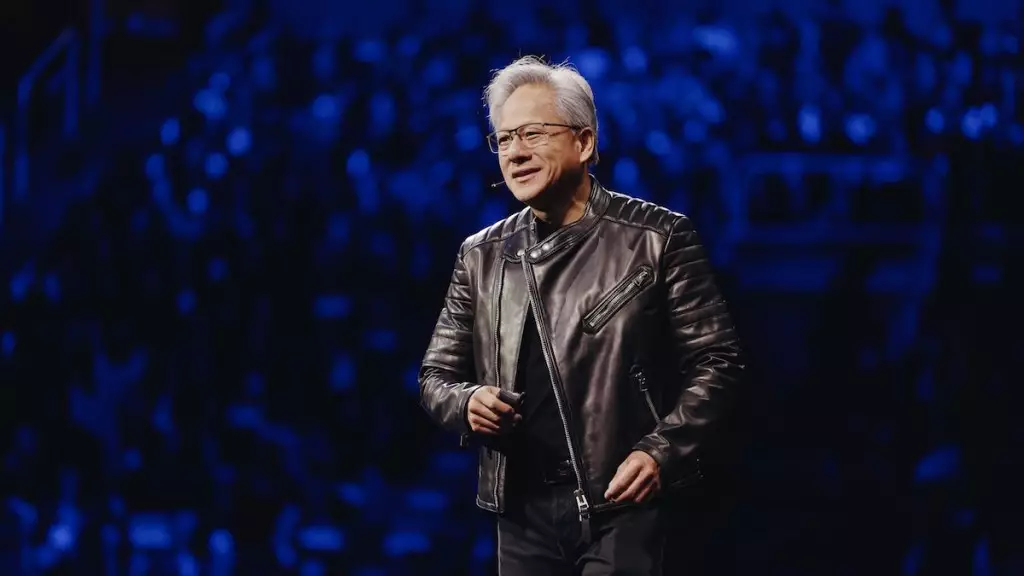The landscape of artificial intelligence is evolving at an unprecedented pace, and companies like NVIDIA are at the forefront of this revolution. With an explosive increase in AI model complexity—boasting billions of parameters—tech giants are repositioning themselves to harness the full potential of AI. The recent GTC keynote by NVIDIA’s visionary leader, Jensen Huang, underscored a critical transition from data training to full-scale production inference, signaling a substantial surge in computational requirements. As data centers morph into AI factories, it is crucial to understand the implications of these advancements on both the industry and society as a whole.
The Dawn of AI Factories
NVIDIA’s narrative of AI innovation is heavily centered around the concept of transforming traditional data centers into robust AI engines. This transformation pivots around the introduction of the Blackwell Ultra AI platform, which promises a staggering 40x performance improvement over its predecessor, Hopper. This leap in efficiency represents not just a technological milestone but a paradigm shift in how AI applications can be developed, trained, and deployed at scale. With such advancements, the potential for AI applications expands exponentially, catering to varied sectors like finance, healthcare, and logistics, blending utility with unprecedented performance.
Revolutionizing AI Infrastructure
It’s not merely about raw computational power; NVIDIA’s strategy includes a multifaceted approach to AI infrastructure. With innovations in photonics, AI-optimized storage solutions, and cutting-edge networking technologies, the energy consumption and scalability of massive AI workloads are set to improve dramatically. The new architectures being rolled out also aim to simplify and accelerate communication between different chips, a critical efficiency enhancer for large-scale AI systems. Such re-engineering of AI infrastructure will likely expedite the time to market for innovations, making it a key player in the AI race.
The Economic Implications: A $1 Trillion Opportunity
As identified by Huang, AI presents a colossal economic opportunity, with projections estimating the market could balloon to a staggering $1 trillion. This growth isn’t purely confined to software; it encompasses a wide array of sectors where AI can optimize processes and elevate productivity. For industries like transportation and manufacturing, AI-driven automation could result in cost savings and enhanced operational efficiencies, and when paired with robotics—via platforms like NVIDIA Isaac and Cosmos—the possibilities are limitless.
The Road Ahead: A Detailed NVIDIA Roadmap
NVIDIA has outlined an ambitious roadmap for the future of its AI technologies. Set to launch models like Vera Rubin and Vera Rubin Ultra between 2026 and 2027, NVIDIA is committed to continuously pushing the envelope in processing capabilities. With features including next-gen chip data transfer enhancements, the technological advancements promise to support ever-larger AI models, thereby catering to an increasingly demanding AI landscape. Furthermore, their foray into quantum computing with the NVIDIA Accelerated Quantum Research Center will undoubtedly open new avenues for AI growth, emphasizing the company’s commitment to staying ahead in a saturated market.
Empowering the Next Wave of Robotics and Quantum Computing
The introduction of DGX Personal AI computers marks another significant milestone, democratizing access to cutting-edge AI. These devices are designed for professionals to utilize advanced AI models directly from their desktops, breaking down barriers to innovation. Additionally, the collaboration with Google DeepMind and Disney Research on the Newton Physics Engine further illustrates NVIDIA’s proactive approach to enhancing robotics. This initiative strives to push humanoid robots towards greater autonomy and efficiency in undertaking complex tasks, propelling both AI-driven robotics and automation into mainstream application.
The rapidly evolving AI landscape exemplified by NVIDIA’s initiatives presents an exciting glimpse into a future where artificial intelligence and physical robotics coexist and cooperate seamlessly across virtually all sectors. The potential socioeconomic impacts are vast, indicating that we are only scratching the surface of what AI can achieve. As advancements continue to unfold, NVIDIA’s forward-thinking approach will undoubtedly play a pivotal role in shaping the trajectory of AI technology and its implementation in our daily lives. The world is on the edge of a transformative leap—an evolution driven by innovation, relentless exploration, and boundless possibilities.

